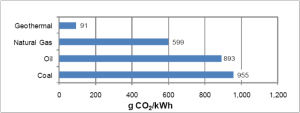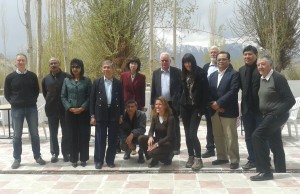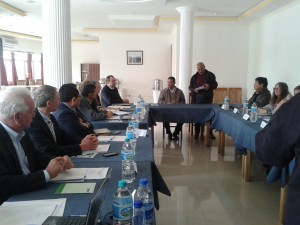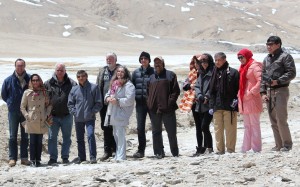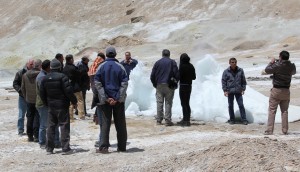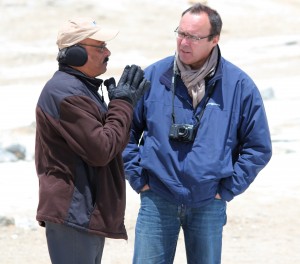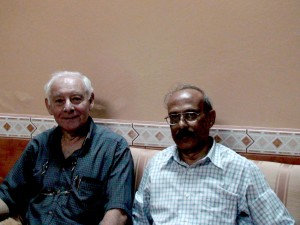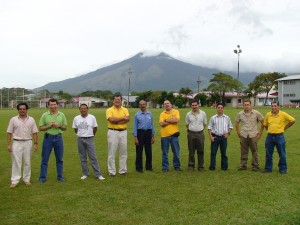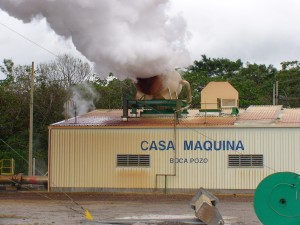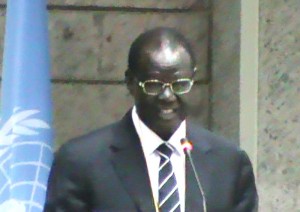According to a recent paper published in Energy Policy reports that a biomass resource model developed by a UK based school shows “that indigenous biomass resources and energy crops could service up to 44% of UK energy demand by 2050 without impacting food systems”. It is not clear whether this model accounts for the black carbon emitted by biomass fuel and its impact on the climate.
BBGs are intimately related! One is a source of energy and the other is a source of global warming!!
Over centuries, civilizations used firewood, biomass and dung cake to sustain lives. For both cooking and heating purposes this was and is the cheap and easily available stock to humans. Excess use of any such energy sources is harmful and the consequences are being felt by the current generation. In the current industrial era, besides the above fuels, fossil fuels like coal, diesel and kerosene enhanced the black carbon (BC) content in the atmosphere further to our misery!! Changing weather pattern, fast retreating glaciers, droughts, flash and summer floods are the consequences of such uncontrolled BC emission. Carbon dioxide also plays a major role but CO2 has a long term effect while BC has a short term effect.
Coal, fuel wood, dung cake and agricultural waste are consumed maximum in that order in India. According to 1996-2001 data, 286 Mt (million) of coal, 302 Mt of fuel wood, 121 Mt of dung cake and 116 Mt of agricultural waste was consumed in India. The consumption of these fuels has increased by several folds due to increase in population and hence demand. BC emission factor of these fuels in that order is ~ 0.8, 1.1, 4.4 and 1.3 g/kg.
BC absorbs sunlight turning it into heat. Thus, a layer of BC in the atmosphere, while emitting a third of this absorbed heat back in to space, keeps the earth’s surface warm. More BC in the atmosphere means more heat over the surface of earth. As the BC increases the earth’s surface gets hotter and hotter!! Simple logic. Thus BC causes change in the heat input at the top of the atmosphere. This is known as “Radiative Forcing (RF)”. According to the Intergovernmental Panel on Climate Change (IPCC) 2007 report, RF of BC is of the order of + 0.34 W/m2 while forcing of CO2 is of the order of + 1.66 W/m2.
What is Black Carbon?? The black soot, that all of us observe in our daily life, is known as black carbon (BC). BC forms due to combustion of carbon based fuels at high temperatures. Thus the sources of BC are fossil fuels (coal, oil, gas), biomass, agricultural waste, dung etc. The life of BC in the atmosphere is about a week, while CO2 lingers for several decades. Both BC and CO2 have tremendous effect on global warming and glacier retreat. BC has strong light absorbing property. Thus short term control of global warming can be accomplished by controlling the BC emission. If BC emission is controlled then half our problems related to global warming is solved!! In developing countries like India and Africa, BC emission emerge mainly from rural sector while transport sector is the main source of BC emission in the developed countries. High percent of biomass and dung is used in rural regions for cooking, space heating and consumption of such fuels is high during winters.
The emission values reported in the literature for BC and other related aerosols in the atmosphere varies like the climate! There is no consistency in the emission values reported. The values keep changing between the authors and sometimes with the same author!. Each authors claims that their value is the best!!
According a paper published in “Atmospheric Environment” in 2002 the BC (India) emission of dung cake is 0.25 g/kg and that of crop waste is 0.47 g/kg. Another paper that appeared in the same journal in 2005 reported BC emission of dung cake from 2.2 to 6.6 g/kg and that of agricultural waste from 0.2 to 2.4 g/kg!! Value reported by the same author also varies with time!! Perhaps such discrepancies may be related to the betterment of analytical techniques and demographic data. Such uncertainties are ( E.g. see Jr. Geophy. Res., 2004) due to extrapolation of data such as population, per capita consumption ( varies by a factor of 3!), economic data etc. and also due to over prediction of fuel-use measurements!!.
Irrespective of these numbers, the truth is, India, next to China, is the leader in BC emission now! Perhaps in future UK may join the bandwagon by 2050.
The total BC emission by India ( 2000 base value) as reported earlier, was 600 Gg (Jr. Geophy. Res., 2003, v,108) while in 2008 this value has changed to 1343 Gg (Geophy. Res. Lett., 2008, v. 35)!!. Thus one gets two values for per capita emission of BC in India. One at 600 g and the second, just double this value!! It is safe to take the minimum value for all discussions.
In India, maximum BC emission is from rural areas like Leh. Leh is located at an altitude of 4500 m in the Himalayas (in Ladakh province of J & K), where the temperatures falls 15 C below zero in winters. Combustion rate of all fuels are low at this elevation. Dung cake, biomass and coal are extensively used to heat the homes and of course for cooking also. Guest houses, army and affluent society use cooking gas or “bukharis”, a device that uses kerosene ( or some times saw dust) to heat rooms and homes. CO, CO2 and BC are ejected out in to the space through an exhaust pipe.
Population of Leh is ~ 68,000 and with the reported per capita BC emission of 600 g (2000) Leh alone is contributing minimum of about 0.04 Gg of BC annually. Similarly, Kargil with a population of 119,307 is contributing about 0.07Gg of BC to the atmosphere around the glaciers. A similar emission figures can be assumed from other towns located at that altitude all along the higher Himalayas, extending from NW to E of India. The BC emission from the foot hill Himalayas also reach higher altitude. During winter ( where BC emission is maximum) snow brings down all the BC floating in the atmosphere. This is the reason why many Himalayan glaciers appear black. It is easy to estimate the BC content in ice. Since it is possible to date ice, BC content in the atmosphere in the past can be estimated.
The Gangotri glacier is retreating at a rate of 18 m/yr. This is really alarming and this observation is not disputed. The real “component” that is responsible for this retreat is BC
Simulation studies conducted by Lawrence Berkeley National Laboratory in Feb 2010 showed that major contributor (~90%) for fast melting of glaciers is BC.
How does this happen? BC deposition on white surface like snow and ice absorbs more light and become warmer faster than pure ice/snow and thus enhances melting process. If ones visits the Gangotri glacier, a major part of the ice body appears dirty ( black) because of small BC particles in it.
BC content in ice cores recovered from ERG glacier is about 20 g/kg. while global average BC content in snow is about 5 g/kg. This is alarmingly high!! 15 g/kg of BC in snow reduces about 1% of its albedo. This is a clear indication that the 18m/year retrieval of Gangotri glacier is due to this huge BC emissions from rural Higher Himalayan villages/towns.
In addition, BC from Asian region also travel to the Himalayan region contributing additional amount to BC.
Since BC heats the atmosphere, it creates local thermal anomaly thereby disturbing the normal atmospheric convection pattern that exerts tremendous influence on the precipitation. Perhaps this could be the reason for the flash flood that devastated Leh in 2010!
The residence time of BC in the atmosphere is about a week while CO2’s is several decades. So BC does not accumulate while CO2 accumulates in the atmosphere. What it means is that through controlling BC emissions, global warming can be controlled within in a short period of time. It is very easy to control BC emissions without compromising life comforts!! The pristine Himalayan ecosystem can be protected and fast deteriorating glaciers life can be restored by tapping the huge geothermal resources available in Leh.
Thus the Biomass model published recently should be valued in terms of the amount of BC emitted by 2050 and its effect on the arctic ice cap.
